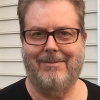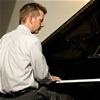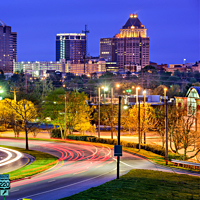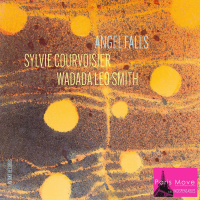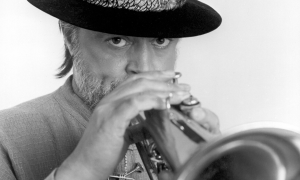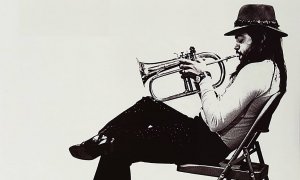Home » Jazz Articles » Catching Up With » Yelena Eckemoff: Growing Into Jazz
Yelena Eckemoff: Growing Into Jazz
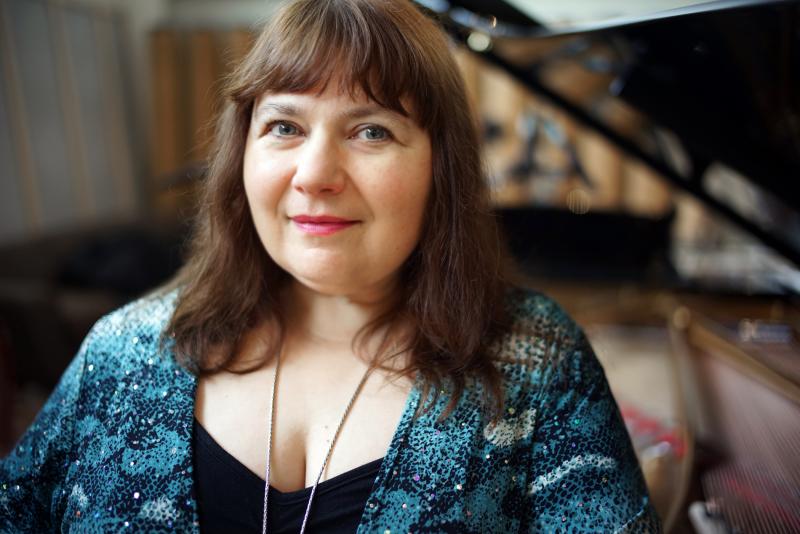
...my approach to the bigger group of instruments is the same as to a trio. I care the same that all the instruments would have an equal chance to come through with an interesting story to tell.
All About Jazz: When All About Jazz ran a Take Five article on you back in 2010, your current album was Flying Steps. You have made several since then. And one of the things I wanted to ask you about: on the current record and a couple others, you have the great Norwegian bassist Arild Andersen playing with you. I was wondering how that connection was made.
Yelena Eckemoff: To answer this question I probably need to tell a bit of my back story.
When we came to live in America, MIDI technology was blooming, and I could not pass up the opportunity to give it a try and assembled myself a cool set-up with a Kurzweil K-2000, PC-88, etc. For over ten years I experimented with sequencing and working solo. I even started to release CDs both in acoustic piano and in electronic music. Then I felt that I truly missed the interaction with other musicians. So I enlisted a drummer, cellist, and flutist here in North Carolina, and we recorded Call in 2006. Then we got a bassist and a reed player, and I continued rehearsing and playing gigs with this ensemble. But yet something was missing. I had good and dedicated musicians, but they did not specifically come from the world of jazz, and I felt I needed help to go in that direction. Around the same time I also started to listen to CDs released by the ECM label. Strangely, I never heard about ECM before. I saw that the ECM approach was much closer than any other music I've ever heard to what I myself was doing throughout my entire life. I remember, I could truly relate to Bobo Stenson, Arild Andersen, Tomasz Stańko, John Abercrombie, Annette Peacock, and John Taylor.
So I bravely approached Arild Andersen via email, offering him to work together—I think it was in 2008. He kindly asked me to send him some music. I did. He listened and said it was nice, but too complicated (laughs). He said he was too busy recording and touring, thus he declined at that point. But interestingly we stayed in touch. So an idea of us working together did not die out.
In the following couple of years I worked with some great musicians: bassists Mads Vinding, Darek Oleszkiewicz, and Mats Eilertsen, and drummers Peter Erskine, Morten Lund, and Marilyn Mazur. I released three trio CDs in 2010 (my personal record!) and one in 2012. I felt I was evolving rapidly—as I still am—and I was getting deeper and deeper into jazz as a genre. Some of material I had composed at that time was right in the same vein Arild was working in. So I offered him that material. He liked it so we recorded Glass Song in 2012 in L.A., with Peter Erskine.
AAJ: Looking over your discography, you've done a lot of trio recordings, but there have been a couple with a slightly larger group, including the current one, Everblue. How different is the approach when you've got additional horns or other instruments beyond the trio?
YE: I had from four to six people in my local band. But when I started to work with world-class jazz musicians I intentionally limited myself to trio. I felt it was a simpler and—honestly—safer approach for me at that time, since I was still growing into jazz. I was very much intrigued with the expressive possibilities of the trio, because of the transparency and intimacy of the setting. Trio was a learning ground for me to experience the interplay and conversation between the instruments, rather than playing a leader with a support section. I learned to write musical arrangements in such a manner that each instrument would be an equal part of a bigger whole without dominating over others.
For a while I felt the trio was a sufficient format for me. Then, after recording five trio CDs, I felt I was ready for a bigger sound. Later the same year after Glass Song I recorded a quartet with flugelhorn in Denmark. Then in 2013, a few months after recording another trio with Arild (the double album Lions), I recorded a quintet with vibraphone and trumpet in Finland; but these two albums (along with another trio with Mads Vinding) have not been released yet.
So, summarizing an answer to your question, I should say that my approach to the bigger group of instruments is the same as to a trio. I care the same that all the instruments would have an equal chance to come through with an interesting story to tell.
Officially my first released quintet is A Touch of Radiance (2014) and first released quartet is Everblue (2015). And I continue to work in quartet settings. I have just recorded another quartet in September of this year and I am recording yet another quartet in December. I guess no more trios on the horizon (laughs).
AAJ: It's often hard to hear the line between composition and improvisation in your music, and I was wondering to what extent there is a lot of composition. Are we talking about lead sheets that are a page long, or are these great big long scores with room for improvisation in different parts?
YE: Scores—yes, for myself, but for each musician it still comes to a lead sheet. I don't write much for bass, because I think bass has to have freedom to play on chord changes. So my bass parts are mostly open lead sheets, unless it's a melody (like in the beginning of "Abyss," for example,) or counter melody, or some kind of polyphonic interaction or groove I want to make sure of. The same goes with the other instruments. But of course some of my pieces are very compositional and have to be written out almost entirely. Those may have several tunes, development, transitions, and things like that, and the improvisations (both free and structured) have to happen at designated spots. But I also write tunes in traditional jazz forms, like intro-tune-choruses-tune repeat and ending. I have to have those simpler forms on the recording session along with the more complicated ones if I am serious about recording an entire album in 2-3 days (laughs).
AAJ: How long are your recording sessions normally? Do they take place over a couple of days?
YE: All of my sessions were two days, except the Finnish one, which was three days, but it's going to be a double album. It's amazing we're always able to record all that difficult music in two days. As a producer, I'm trying to think it all through, and in what order to record, and how to make sure that we get it all. It is very important for me to cover all the material, since my albums are conceptual and each song is an essential part of a story. It also helps to have great musicians in your boat (laughs).
AAJ: Is there anything different about the music you bring to the group when it's larger than a trio? Is there more written down when there's more players?
YE: No, not necessarily. But of course, bringing additional voices into the score makes it more challenging. I have to make a thought-through arrangement and a clear and easily read part for each musician. Every instrumental part has on average two-three, sometimes four-five pages. As long as it fits on the music stand (or two) I think it is not too much (laughs).
AAJ: You mentioned having a local band early on. Do you still have any kind of a working group locally?
YE: No, I don't work with local musicians. Actually, Billy Hart advised me that if I wanted to perform more, I should get a local band that would always be available. But I doubt I would be able to find readily available local musicians of the caliber and direction to match the ones I have been working with in the past seven years. Besides I hardly have any time to handle a local band—with all the efforts I am putting into with my music and my L & H Production label, plus I also teach piano.
AAJ: Have you managed to do any live performances with any of the folks you've recorded with?
YE: The following week after recording "Lions" with Arild Andersen and Billy Hart, we had an opportunity to bring my music to the Birdland Jazz Club, which was my debut performance in NYC. Next year I performed A Touch of Radiance at the Jazz Standard with George Mraz. Unfortunately George was the only one who was on the recording: Mark Turner, Joe Locke, and Billy Hart couldn't make it. I had asked Donny McCaslin to play saxophone and Eric McPherson, drums, and re-arranged the music from quintet to quartet. It was nice, but I was a little disappointed that I couldn't have the same band at the CD-release performance. This past April I had two performances of Lions in London with Arild Andersen and Martin France (a great UK drummer who substituted for Billy Hart.) Firstly we played at Ronnie Scott's, then on the second day at The Spice of Life, and it was really great to have this mini tour in support of the Lions CD release in the UK.
In general, I have to say that it's not easy for me to arrange performances, because I have never been a touring musician. Even though I have played many classical piano recitals and a number of gigs with my bands, I've never been on the road for too long. A big part of my life was consumed by immigration and integration into my new home country and raising three children. So, as many women before me, I had to put my career on hold for a while.
But I also see myself more as a composer, recording artist, producer, and a label owner than a touring musician. As soon as I finish one album, I am starting on another, and often work on several albums at the same time. I can't imagine where I would find time to compose all the music, record and produce an average 2 albums a year if I had to travel a lot. The other side of the coin is that I'm afraid if I had to tour a lot I wouldn't have enough time or energy to compose. At the same time, if an opportunity arises, I am always happy to show people my live performer's side. By the way, there are some videos of my live performances on YouTube. I still hope I will be able to put my live performing skills to good use in the future.
AAJ: A Touch of Radiance has American players, while Everblue has European players. How much does that change your approach in the studio?
YE: I always feel a bit awkward when I record overseas, because I hear so much foreign language I don't understand spoken during recording, and being a producer I'm concerned that I might be missing some input. But otherwise I see no difference between American and European musicians in general. Only as far as people have different personalities and bring different vibes with them, so all recording sessions are different. I think I have enough experience to say that if I provide clear directions and clear charts, the outcome will be more or less the same. Out of all the drummers I worked with, Jon Christensen did not follow any lead sheets, but we were rehearsing the day before session and he listened and made notes. All of my other drummers used my charts when they were recording; this might be the only difference I recall.
AAJ: So it's mainly a matter of you picking musicians you think would be appropriate to the music and letting them go.
YE: When I conceive a new project, at certain point I start developing a feel for what kind of band I'd like to have, that would be able to express my musical ideas the best way. And when I choose and confirm the band, it starts working vice-versa: I try to tailor my music to this band and to each of these musicians. But whoever agrees to record with me must respect my music and follow the structures and written notes, even though during recording or performance we might decide to make some changes or take a different approach, and it always turns for the best.
AAJ: Can you elaborate a little more on your plans for the near future?
YE: Of course, the label may change the release schedule, but I hope to release my Finnish quintet in the spring of 2016. This is a double CD called Blooming Tall Phlox. [Phlox is a flower genus, a key smell in that story] It is another conceptual album, this time about the Winter smells and Summer smells, so you see we played music about smells (laughs), and of course I wrote about every track and painted a picture [as she has on several earlier albums]. I'm not a poet, but when I try to throw away as many words as possible out of my first drafts, and just leave the essential ones, it somehow becomes poetry—at least to some extent. As an artist and producer I find this combined artistic expression to be paramount for me, because I feel that I am offering people an opportunity to experience what I myself feel on the most personal level.
Later in 2016 I hope to release the project we've just recorded this past September in NYC, with Mark Feldman on violin, Ben Street on bass and Billy Hart on drums. It will be called Leaving Everything Behind. I left a lot of things behind when we emigrated, but the concept is broader than just my immigration.
Finally, I am recording in December in California with Arild Andersen, Peter Erskine, and Paul McCandless—a project about the desert. There are many exciting ideas in my head that also might take me to another direction. I hope I will see them through one way or another.
I almost forgot, my first LP is coming out in November. The vinyl color will be transparent blue—so natural for Everblue.
Tags
Yelena Eckemoff
Catching Up With
Mark Sullivan
DL Media
United States
North Carolina
Greensboro
Arild Andersen
Bobo Stenson
tomasz stanko
John Abercrombie
Annette Peacock
John Taylor
Mads Vinding
Darek Oleszkiewicz
Mats Eilertsen
Peter Erskine
Morten Lund
Marilyn Mazur
Billy Hart
George Mraz
Mark Turner
Joe Locke
Donny McCaslin
Eric McPherson
Martin France
Jon Christensen
Mark Feldman
Ben Street
Paul McCandless
PREVIOUS / NEXT
Support All About Jazz
 All About Jazz has been a pillar of jazz since 1995, championing it as an art form and, more importantly, supporting the musicians who make it. Our enduring commitment has made "AAJ" one of the most culturally important websites of its kind, read by hundreds of thousands of fans, musicians and industry figures every month.
All About Jazz has been a pillar of jazz since 1995, championing it as an art form and, more importantly, supporting the musicians who make it. Our enduring commitment has made "AAJ" one of the most culturally important websites of its kind, read by hundreds of thousands of fans, musicians and industry figures every month.

